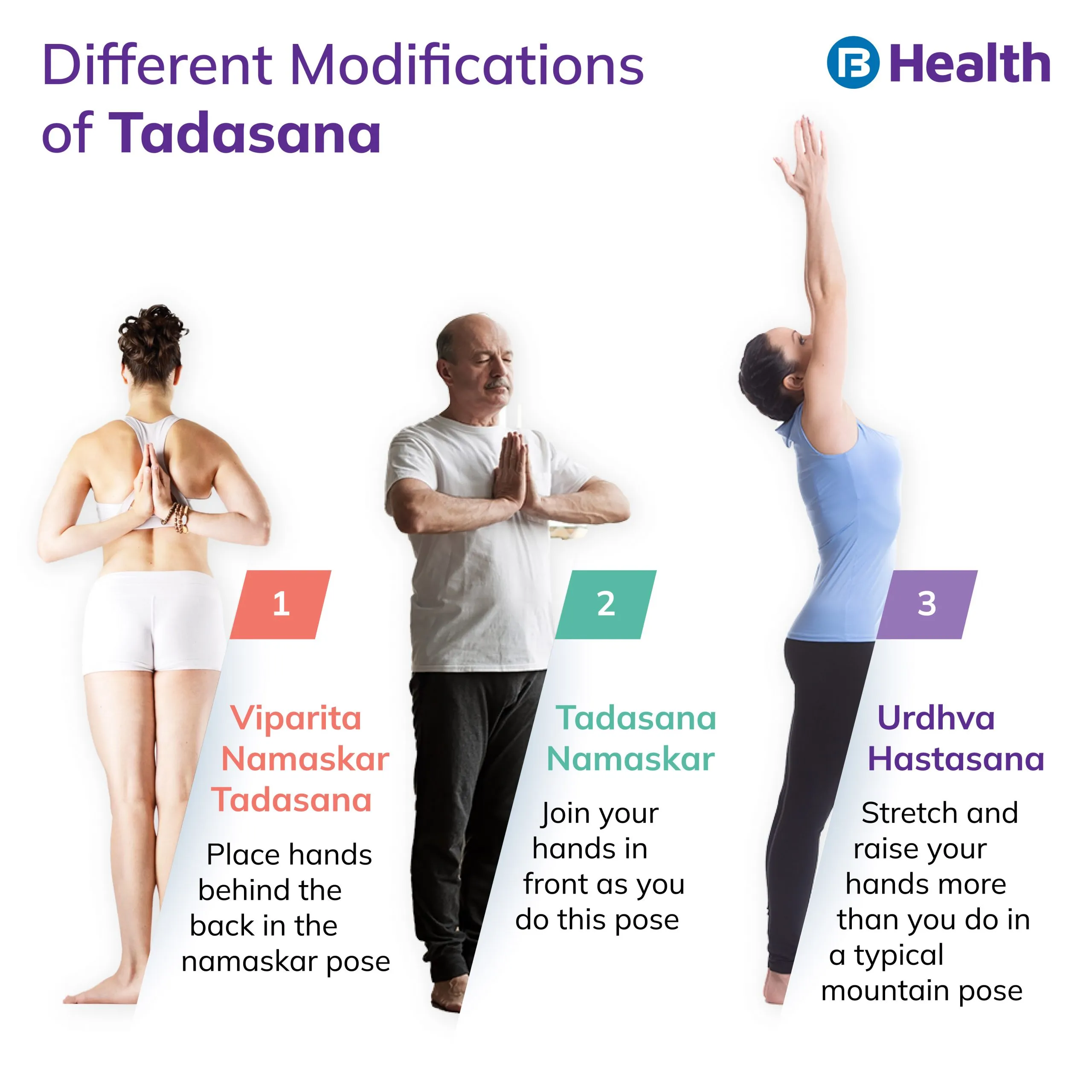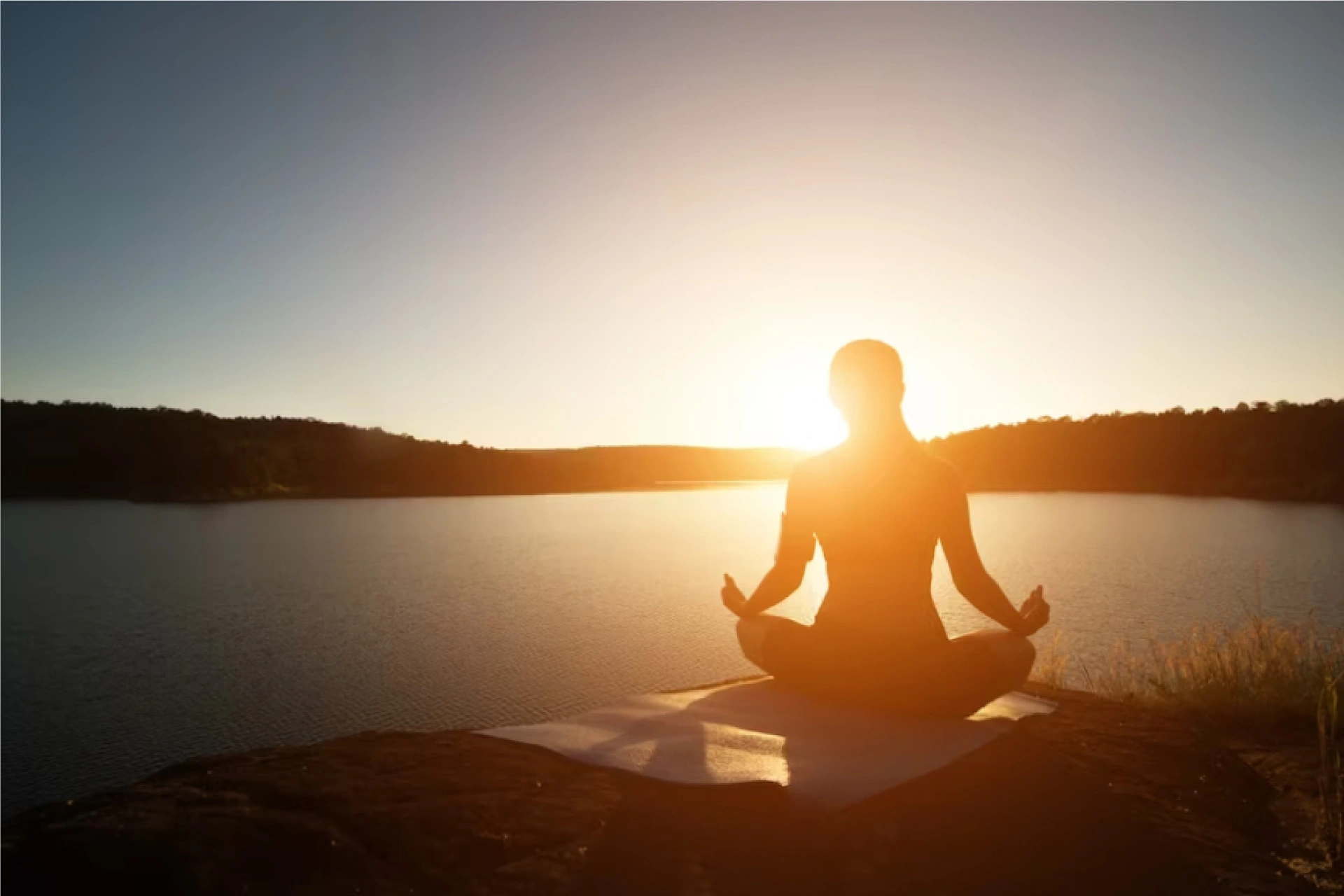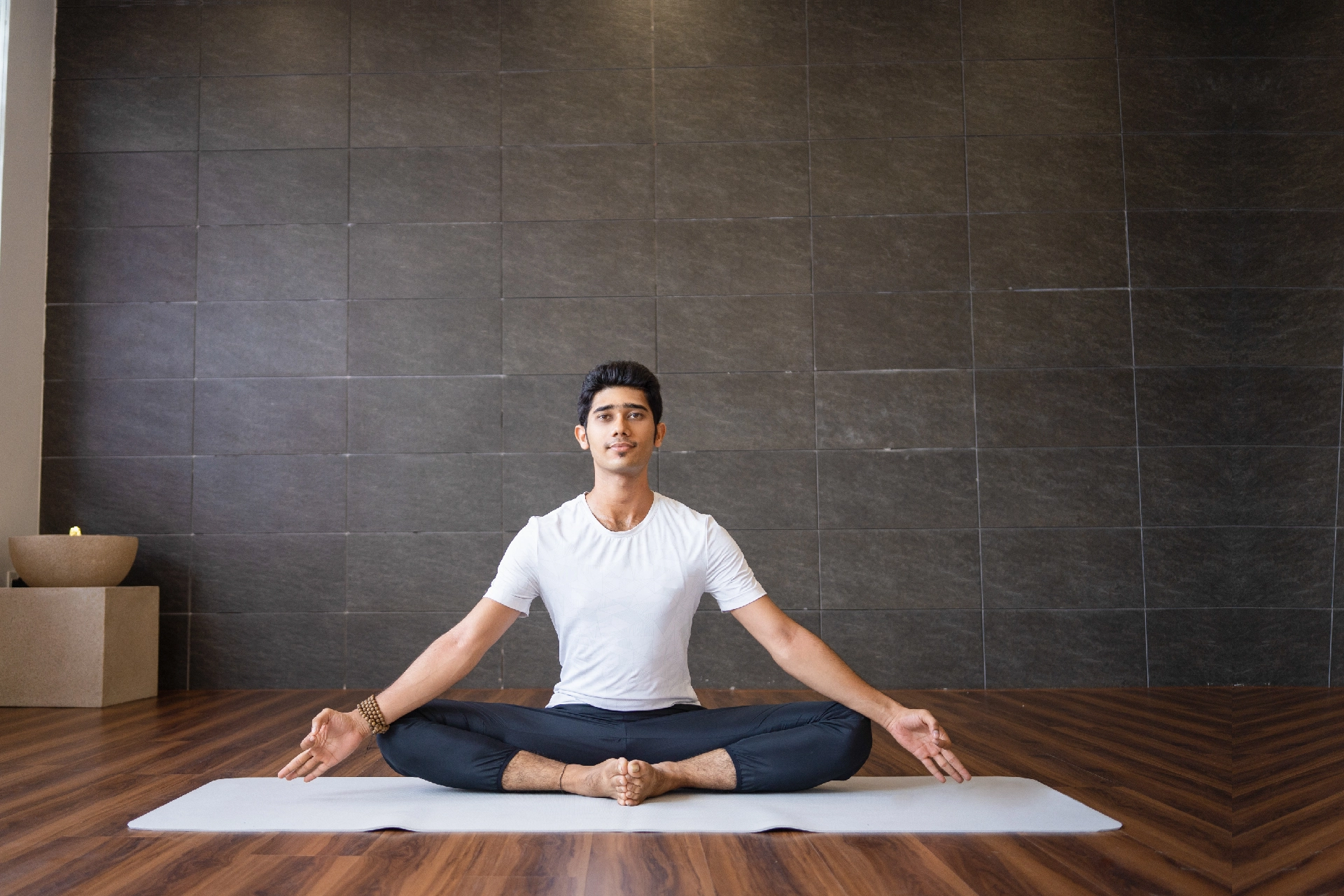Physiotherapist | 6 min read
Tadasana Yoga: Steps, Benefits, Techniques and Tips
Medically reviewed by
Table of Content
Synopsis
Tadasana or the mountain pose is the basic foundation pose for most standing yoga asanas. Practice tadasana yoga in the right way and see how tadasana benefits your mental and physical health!
Key Takeaways
- Practicing tadasana improves your body posture
- Tadasana benefits your spine by increasing flexibility
- Tadasana yoga increases both agility and balance
Practicing yoga improves your flexibility and calms your mind. One such effective yoga pose is tadasana. In many evening and morning yoga exercises, tadasana is the foundation for different types of standing yoga poses. In fact, tadasana is the base for the popular sun salutation series of Surya Namaskars. Tadasana benefits in various health issues.
Tadasana is also considered a standing meditation pose and is as effective as sitting meditation [1]. Tadasana is great for those who have health conditions like arthritis and cannot sit to meditate for long. The mountain pose can also help you achieve mindfulness if you tend to lose focus or start to feel sleepy while meditating in a sitting position.
Practice tadasana or the mountain pose at the beginning of your session or between your yoga exercises to ground yourself. One of the easiest yoga asanas, mountain pose yoga, has many health benefits. Tadasana yoga pose helps you align your body and mind.
One of the most important tadasana benefits is that it is effective in treating a condition called reflex vasovagal syncope. This is a condition in which you faint as your body cannot cope with certain triggers like emotional distress as well as standing for too long. Practicing tadasana, along with other therapies, reduces susceptibility to this condition, as per a study [2].
Doing tadasana regularly also helps you efficiently perform other yoga poses. Tadasana not only helps you correct imbalances in your muscular system but also allows you to correct your posture. This simple mountain pose yoga enhances your self-esteem and stability. What’s more, tadasana also improves digestion and bowel movement. Tadasana yoga requires you to engage your entire body and mind to boost your physical and mental well-being.
Read to get an insight into tadasana, how to perform this mountain yoga pose, and the various tadasana benefits.
 Additional read: 5 Easy Yoga Poses and Tips
Additional read: 5 Easy Yoga Poses and TipsHow to Practice Tadasana Yoga
Tadasana is a Sanskrit word in which ‘tada’ means mountain and ‘asana’ refers to a yoga pose. That’s why tadasana is commonly called the mountain pose. If you are practicing any yoga pose, make sure to follow its steps properly. Not only will this help you get the most out of it, but this also helps you prevent injury or harmful effects.
If you are a beginner, it is always better to learn yoga poses like tadasana from a certified yoga instructor for effective results. These teachers can help you with the alignment of your body, which you may not always be able to figure out yourself if you haven’t practiced yoga before. That said, since tadasana is a basic standing pose, you may practice it regularly by following the steps below.
Tadasana Steps
- To begin tadasana, keep your feet together and on the yoga mat with both legs evenly spreading your body weight and stand straight.
- Place your hands straight and on both sides of your body with palms facing in front.
- Roll your shoulders back so your chest pushes out and up.
- Make sure your thigh muscles are firm and contracted, and your core is strong and activated right when you start tadasana and all through the pose.
- Raise your body slowly on your toes and bring your hands upwards with the palms facing out
- Maintain your balance on your toes by looking straight ahead at a fixed point for stability
- As you rise up, ensure your chest rises up too, your spine stretches, and you engage your upper thighs and core; this is the way to get tadasana right.
- Inhale deeply as you raise your arms high
- As you finish the rising motion, join your palms together.
- Ensure that your neck alignment is straight and that you relax your face muscles
- Breathe deeply and continually as you remain here for a few seconds
- Exhale and bring your shoulders down
- Relax your muscles slowly and return to the original standing position
- Do tadasana again around four more times.
- Make sure you do tadasana slowly and without jerky movements.
Keep in mind that there are many variations of tadasana that change the position of your hands or don’t require you to rise on your toes. All of these have their own benefits, and you can do them based on your flexibility and health.

Tadasana Yoga Benefits For Mental and Physical Health
While tadasana may seem a simple pose, it is highly beneficial for your body when done in the right way. While it improves your flexibility, tadasana can also relieve your pain. Regular practice of tadasana yoga builds your body strength. Apart from these tadasana benefits, here are a few additional advantages of practicing tadasana.
- Enhances your balance
- Improves your blood circulation
- Increases how agile you feel
- Tones core muscles in your body
- Strengthens your legs, lower back, and hips
- Corrects your body posture, especially slouching or hunching
- Boosts your mental strength
- Decreases negative thoughts that lead to anxiety and depression
- Improves your breathing by clearing your lungs
- Rejuvenates your body and instills positivity
- Helps burn calories faster
- Increases the flexibility in your spine
Tadasana For Medical Conditions:
- COPD (respiratory ailment)
- Spondylitis
- Parkinson’s disease
- Sciatica pain
If you practice tadasana regularly, it may help you gain control over your muscular movements. Teenagers can do tadasana to increase their height too! It also improves your cognitive functioning. No wonder yoga therapists do not miss out on including tadasana in their yoga routine!
Tadasana also strengthens the abdomen and increases focus in pregnant women, as per a study [3]. Strengthening the ankles, knees, and thighs is another tadasana benefit for athletes or those who need to stand for long periods [4]. Tadasana is also known to relieve the pain of carpal tunnel syndrome, which is great news if you spend a lot of time on your computer [5]. To experience these benefits, you can also do a seated tadasana!
Additional read: Yoga for COVID PatientsTips For Practicing Tadasana Mountain Pose
If you are a beginner, consider these precautionary measures before starting tadasana.
- Do not try tadasana if you have sleep issues like insomnia
- Avoid continuing the pose if you have a headache
- Do not practice tadasana if your blood pressure is low
- Avoid mountain pose if you are taking blood thinners
- Consult a doctor before you practice tadasana yoga if you have any medical conditions
- Do not stay in tadasana for an extended period as you may feel dizzy
- Do tadasana on an empty stomach or execute it after a gap of at least 4 hours after meals
- Increase the gap between your feet if you are pregnant and practice tadasana so that your body remains stable
Most of all, remember that your body must be in proper alignment when performing the tadasana or any other yoga pose. Another effective pose for strengthening your knee muscles is the anjaneyasana. It is also called the lunge pose, in which you form the shape of a crescent moon. Similarly, there are many poses of yoga for the heart and spine that you can try along with tadasana too.
For proper meditation and calmness of the mind, you may try yoga breathing techniques such as anulom vilom and pranayama. Practice mindfulness meditation with tadasana, and these other techniques improve your mental health. For advice on tadasana and other yoga poses, you can contact naturopaths and other doctors on Bajaj Finserv Health. Book an online doctor appointment or an in-person consult with ease on this app or website and be proactive about any symptoms. With consistent yoga practice of poses like tadasana and timely medical advice, you can work towards a healthier future!
References
- https://www.researchgate.net/profile/Jai-Dudeja/publication/334680595_Benefits_of_Tadasana_Zhan_Zhuang_and_Other_Standing_Meditation_Techniques/links/5d39cc90299bf1995b4a778d/Benefits-of-Tadasana-Zhan-Zhuang-and-Other-Standing-Meditation-Techniques.pdf
- https://papers.ssrn.com/sol3/papers.cfm?abstract_id=3807017
- https://www.researchgate.net/profile/Dr-T-Reddy/publication/340731445_Benefit_of_Yoga_Poses_for_Women_during_Pregnancy/links/5e9ad32592851c2f52aa9bcb/Benefit-of-Yoga-Poses-for-Women-during-Pregnancy.pdf
- https://core.ac.uk/download/pdf/79572695.pdf
Disclaimer
Please note that this article is solely meant for informational purposes and Bajaj Finserv Health Limited (“BFHL”) does not shoulder any responsibility of the views/advice/information expressed/given by the writer/reviewer/originator. This article should not be considered as a substitute for any medical advice, diagnosis or treatment. Always consult with your trusted physician/qualified healthcare professional to evaluate your medical condition. The above article has been reviewed by a qualified doctor and BFHL is not responsible for any damages for any information or services provided by any third party.



